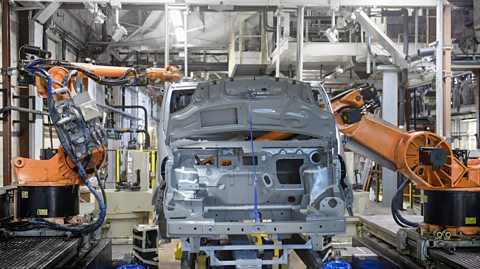Capital intensive

Robots at work - an example of capital intensive production
Capital intensive is when products are mainly produced by machines and robots, meaning the initial outlay and maintenance, will be very high. Capital intensive production can be either mechanised or automated:
Mechanised production
Mechanised production is when the production process requires both machinery and humans. Machines are required to carry out most of the work although they are operated and controlled by humans.
Automated productions
Automated productions is when the production process is mainly carried out by machinery/robots and is mostly controlled by computers. Human input is limited in automated production.

Automated productions are mainly controlled by computers but there is limited input from people
| Advantages | Disadvantages |
| Less employee wages and costs | More difficult to customise orders |
| Quality can be standardised, the same every time | Breakdowns in production can be costly |
| Machines can work continuously, 24/7 meaning products are produced quicker | Initial set up costs of machinery are high |
| Machines can carry our dangerous tasks which will reduce accidents | Employees may become demotivated |
| Machines can carry out repetitive tasks that humans would find boring |
| Advantages | Less employee wages and costs |
|---|---|
| Disadvantages | More difficult to customise orders |
| Advantages | Quality can be standardised, the same every time |
|---|---|
| Disadvantages | Breakdowns in production can be costly |
| Advantages | Machines can work continuously, 24/7 meaning products are produced quicker |
|---|---|
| Disadvantages | Initial set up costs of machinery are high |
| Advantages | Machines can carry our dangerous tasks which will reduce accidents |
|---|---|
| Disadvantages | Employees may become demotivated |
| Advantages | Machines can carry out repetitive tasks that humans would find boring |
|---|---|
| Disadvantages |